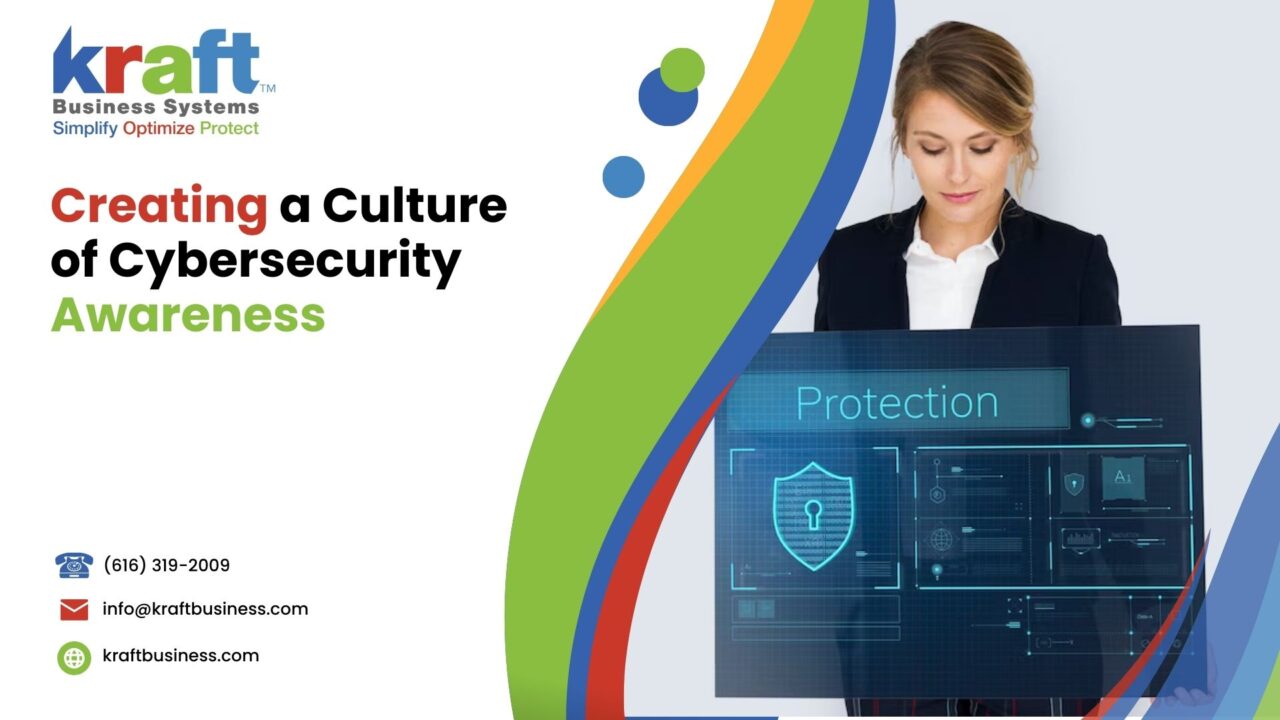With increasing cyber threats and data breaches, the need for robust cybersecurity measures has never been more critical. However, technology alone can’t protect us. Therefore, fostering a culture of cybersecurity awareness within an organization is essential.
Cybersecurity awareness involves educating employees about security best practices, identifying potential threats, and understanding the importance of cyber hygiene. This awareness helps prevent costly cyber incidents and promotes a proactive approach to information security.
In this article, we’ll explore the importance of cybersecurity awareness, how to build a security-conscious culture, and strategies for promoting and measuring security awareness in your organization.
Understanding Cybersecurity Awareness
Definition and Importance
Cybersecurity awareness refers to the knowledge and behaviors that enable individuals to recognize and respond to cyber threats. It’s about understanding the risks and knowing how to protect sensitive information. In other words, it’s the foundation of a secure organization.

The importance of cybersecurity awareness cannot be overstated. It empowers employees to identify and mitigate potential cyber risks, reducing the likelihood of successful attacks. Moreover, an aware workforce is a critical component of any security strategy, enhancing the overall cyber resilience of an organization.
Current State of Cybersecurity Awareness
Current statistics highlight significant gaps in cybersecurity awareness. For instance, studies show that a large percentage of cyber incidents result from human error. Common challenges include insufficient security training, lack of awareness programs, and inadequate policies.
Despite these challenges, many organizations are making strides in improving cybersecurity culture. Trends indicate a growing recognition of the importance of awareness training and the need for ongoing employee education. However, there’s still much work to be done to ensure comprehensive cyber awareness across all sectors.
Building a Culture of Cybersecurity Awareness
Leadership and Commitment
Creating a culture of cybersecurity awareness begins with leadership. Leaders play a pivotal role in fostering a security-conscious environment. Their commitment to cybersecurity sets the tone for the entire organization.

Top management must prioritize security initiatives and allocate resources for awareness programs. By doing so, they demonstrate that cybersecurity is a critical organizational priority. This commitment encourages employees to take security measures seriously, promoting a unified approach to cyber defense.
Employee Engagement and Training
Employee engagement is crucial for effective cybersecurity awareness. Employees must be actively involved in security training and understand their role in protecting the organization. Therefore, effective training programs are essential.
Training programs should be interactive and relevant, focusing on real-world scenarios. For instance, phishing simulations can help employees recognize and respond to phishing attacks. In addition, continuous education and regular awareness initiatives keep cybersecurity top of mind, reinforcing the importance of cyber hygiene.
Policies and Procedures
Developing and implementing comprehensive cybersecurity policies is another critical step. Policies should outline the security measures employees must follow, from password management to data handling. Regular updates and reviews ensure that these policies remain effective and relevant.
In addition, clear procedures for reporting cyber incidents and responding to security breaches are essential. Employees should know what to do if they encounter a cyber threat, ensuring a swift and coordinated response.
Technology and Tools
Technology can significantly support cybersecurity awareness. Tools such as security monitoring systems and compliance software help maintain cyber hygiene and track adherence to security policies.
In addition, implementing cybersecurity tools like firewalls, anti-virus software, and encryption can enhance protection. These tools, combined with employee awareness, create a robust cyber defense framework. By leveraging technology, organizations can monitor for cyber threats and ensure compliance with security standards.
Strategies for Promoting Cybersecurity Awareness
Communication and Collaboration
Effective communication is the cornerstone of a strong cybersecurity culture. Clear and concise messages ensure everyone in the organization understands their role in maintaining security. For instance, regular all-staff meetings with a cybersecurity story can highlight recent incidents and reinforce the importance of vigilance.

Encouraging collaboration across departments is equally crucial. When teams work together, they share knowledge and foster a collective sense of responsibility. In addition, cross-departmental collaboration helps identify and address security issues that might otherwise be overlooked. Cyber threats are ever-evolving; therefore, a united approach is necessary to stay ahead.
Above all, fostering open dialogue about cybersecurity practices and potential security incidents builds trust. Employees should feel comfortable reporting security breaches or suspicious activities without fear of retribution. This proactive communication strategy enhances the overall security posture of the organization.
Incentives and Recognition
Rewarding good cybersecurity practices motivates employees to stay vigilant. Incentives can range from simple recognitions, like a mention in the company newsletter, to more substantial rewards, such as bonuses or extra vacation days. Recognizing efforts in maintaining a strong security culture reinforces the importance of cybersecurity within the organization.
Creating a positive reinforcement loop is essential. When employees see their peers being rewarded for good security practices, it encourages them to follow suit. Therefore, establishing a culture of continuous improvement becomes easier.
In addition, integrating cybersecurity goals into performance reviews ensures that employees understand that cybersecurity is a priority. This approach not only rewards compliance but also emphasizes the organization’s commitment to security.
Incident Response and Reporting
Establishing clear incident response protocols is crucial for an effective cybersecurity strategy. Employees should know exactly what steps to take if they encounter a security threat. Detailed guidelines on reporting security breaches ensure that incidents are handled swiftly and efficiently.
Encouraging prompt reporting of security incidents is vital. The sooner a threat is identified, the quicker it can be mitigated. Regular drills and simulations can help employees become familiar with the incident response process, ensuring a coordinated effort during an actual breach.
In addition, having a dedicated cybersecurity team to handle and investigate security incidents ensures that the organization is prepared for any eventuality. This team should work closely with all departments to maintain a robust security posture and foster a mature cybersecurity culture.
Measuring the Effectiveness of Cybersecurity Awareness
Key Metrics and Indicators
Measuring the effectiveness of cybersecurity awareness involves tracking key metrics and indicators. These metrics provide insights into how well the organization is performing in terms of security awareness. Important metrics include the number of reported incidents, employee participation in training programs, and results from phishing simulations.
In addition, regular assessments and surveys can gauge employee understanding and engagement. For instance, a drop in successful phishing attempts after awareness training indicates improved cybersecurity practices. Metrics help identify strengths and areas for improvement, allowing the organization to adjust its strategies accordingly.
By focusing on these indicators, organizations can ensure that their cybersecurity awareness programs are effective and that employees are adequately prepared to respond to cyber threats. This approach enhances the overall security culture and helps maintain a proactive stance against potential risks.
Feedback and Continuous Improvement
Gathering feedback from employees is essential for continuous improvement. Regular surveys and feedback sessions provide valuable insights into the effectiveness of awareness programs. Employees can share their experiences, highlight challenges, and suggest improvements, contributing to a culture of continuous improvement.
Using feedback to refine and enhance cybersecurity awareness initiatives ensures that the programs remain relevant and effective. For instance, if employees indicate that certain training modules are outdated or unengaging, the organization can update the content to better address current cyber threats.
In addition, fostering an open environment where employees feel comfortable providing feedback encourages ongoing dialogue about cybersecurity. This approach not only improves awareness programs but also reinforces the organization’s commitment to cybersecurity. Regular updates and enhancements based on feedback help maintain a high level of cybersecurity readiness and responsibility.
What People May Also Ask
What is cybersecurity awareness training?
Cybersecurity awareness training educates employees about cyber threats, security best practices, and their role in protecting the organization. It covers topics like phishing, password security, and data protection, helping employees recognize and respond to potential threats.
Why is cybersecurity culture important?
A strong cybersecurity culture ensures that security practices are integrated into everyday operations. It reduces the risk of security breaches and promotes a proactive approach to information security. Moreover, a cyber-aware workforce is better equipped to handle cyber threats and maintain a robust security posture.
How can employees be more aware of cybersecurity?
Employees can become more aware of cybersecurity through regular training programs, awareness initiatives, and continuous education. Engaging training methods and real-world scenarios enhance understanding and retention of security practices. Additionally, open communication and feedback encourage ongoing vigilance.
What are the best practices for promoting cybersecurity awareness?
Best practices include leadership commitment, effective training programs, comprehensive cybersecurity policies, and leveraging technology. Encouraging employee engagement and providing incentives for good security practices also promote cyber awareness and help create a culture of cybersecurity.
How do you measure cybersecurity awareness?
Cybersecurity awareness can be measured through key metrics like the number of reported incidents, employee participation in training, and results from phishing simulations. Regular assessments and surveys provide insights into employee understanding and engagement, helping organizations refine their awareness programs.
Key Takeaways for Cybersecurity Awareness Programs
In conclusion, creating a culture of cybersecurity awareness is vital for any organization. By focusing on effective communication, encouraging collaboration, and implementing clear incident response protocols, organizations can enhance their cybersecurity posture.
Measuring the effectiveness of awareness programs and continuously improving based on feedback ensures that employees remain vigilant and informed.
Prioritizing cybersecurity awareness not only protects the organization but also fosters a safer digital environment for everyone. Therefore, start building your cybersecurity culture today and ensure your organization is prepared for the digital challenges ahead.







